There can be your advertisement
300x150
Repair in Practice: Choosing Ceiling Materials for Bathroom
Updating a bathroom ceiling is no easy task. In a small room with high humidity, attention should be paid not only to the appearance of the finish but also its technical characteristics - safety, durability, and eco-friendliness. Designer Darya Mikhailova has compiled a shortlist of the most practical materials and highlighted the pros and cons of each.
1. Gypsum Suspension Ceiling
A suspended ceiling is the most practical option for a bathroom. The structure is flexible and can withstand any temperature fluctuations. When choosing material for the ceiling, prefer GKL - moisture-resistant gypsum board. During its production, hydrophobic additives and anti-fungal components are used, which means this material will not get damp, crumble, or rot.
Pros: the main advantage of gypsum board constructions is that they allow you to hide ceiling irregularities. The metal frame base also provides the ability to conceal utilities. In addition, suspended ceilings have a long service life - from 15 to 20 years.
Cons: like any painted surface, a gypsum board structure will be subject to negative environmental effects and gradually lose its original appearance. Therefore, the ceiling will need to be recoated with paint periodically. However, the structure itself will not be damaged.
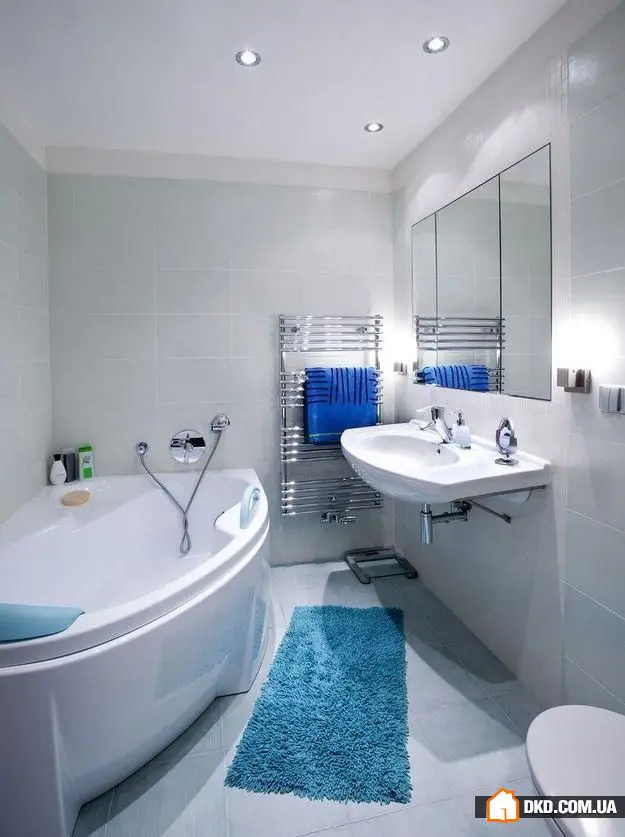
2. Stretch Ceiling
Ceilings made from thin vinyl film stretched over a plastic frame are an excellent option for a bathroom. The water-resistant material does not require special care and withstands high temperatures without loss. However, installing the structure is quite complex, so it's best to leave it to professionals. One tip: choose glossy fabric for the ceiling - material on a textile base is not suitable for bathrooms.
Pros: the glossy surface visually expands the space and adds height to the room. The structure can withstand up to 100 liters of water and won't tear - a strong argument for those afraid of being flooded by neighbors above. Stretch ceilings are also safe for health - they do not emit toxins and are resistant to mold and mildew.
Cons: high cost, although it is compensated by the long service life. There are also cases where the structure can tear. A light stretch ceiling in a bathroom gradually yellows over time, especially near light fixtures. It is impossible to repaint or clean the defect - only replacement remains.
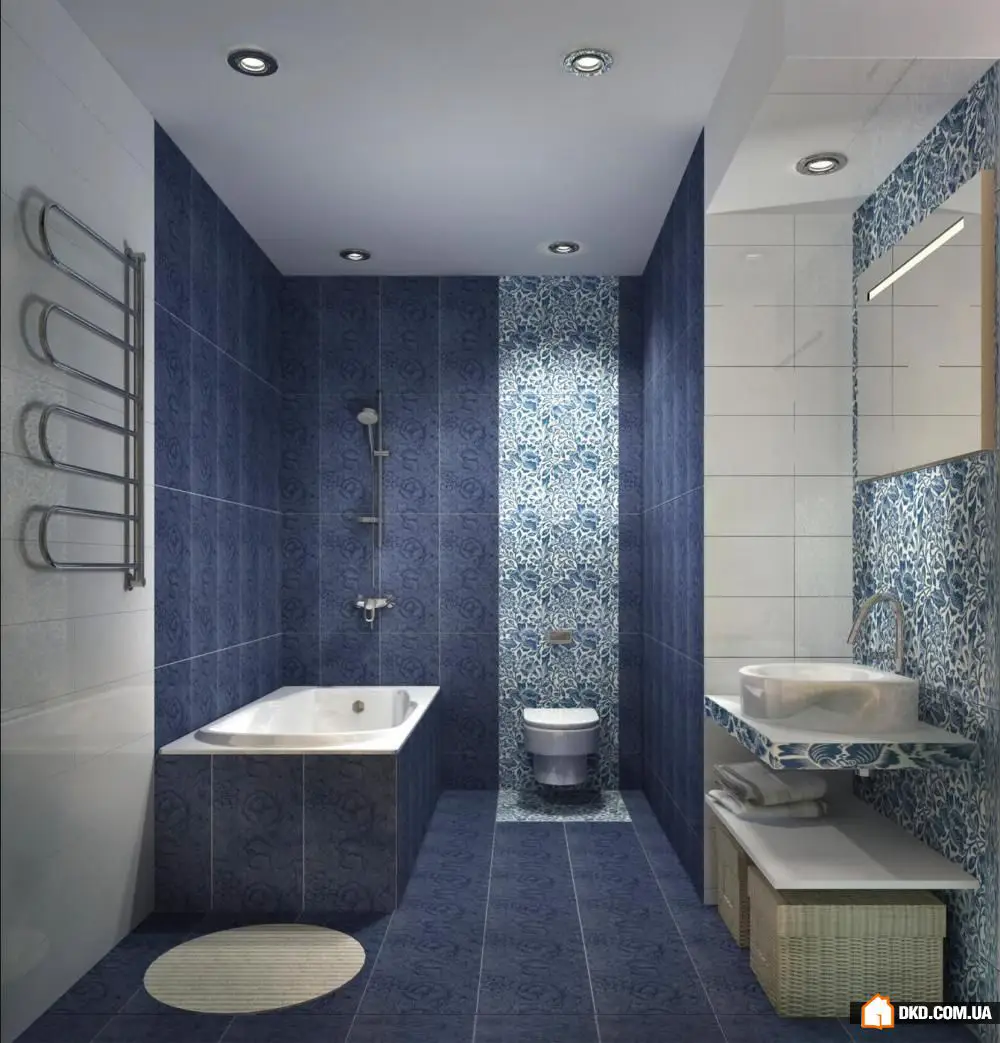
3. Ceiling Made from Plastic Panels
Plastic panels for bathroom ceilings are the most suitable option for finishing a ceiling in terms of price-to-quality ratio. Besides low cost, they attract with ease of installation and are ideal for quick repairs. Due to their specific mounting method, individual elements look like a single panel and appear neat.
Pros: lightweight and fast to install - it takes about 8 hours to cover a room of 8-10 square meters. Two-thirds of the time is spent on framing, and the rest is for laying the panels. The material significantly improves sound and thermal insulation of the room, which is particularly important in apartment buildings.
Cons: to update the ceiling, you'll have to remove the old finish and install new panels. Poorly assembled joints between panels may be visible, giving the room a sloppy look.
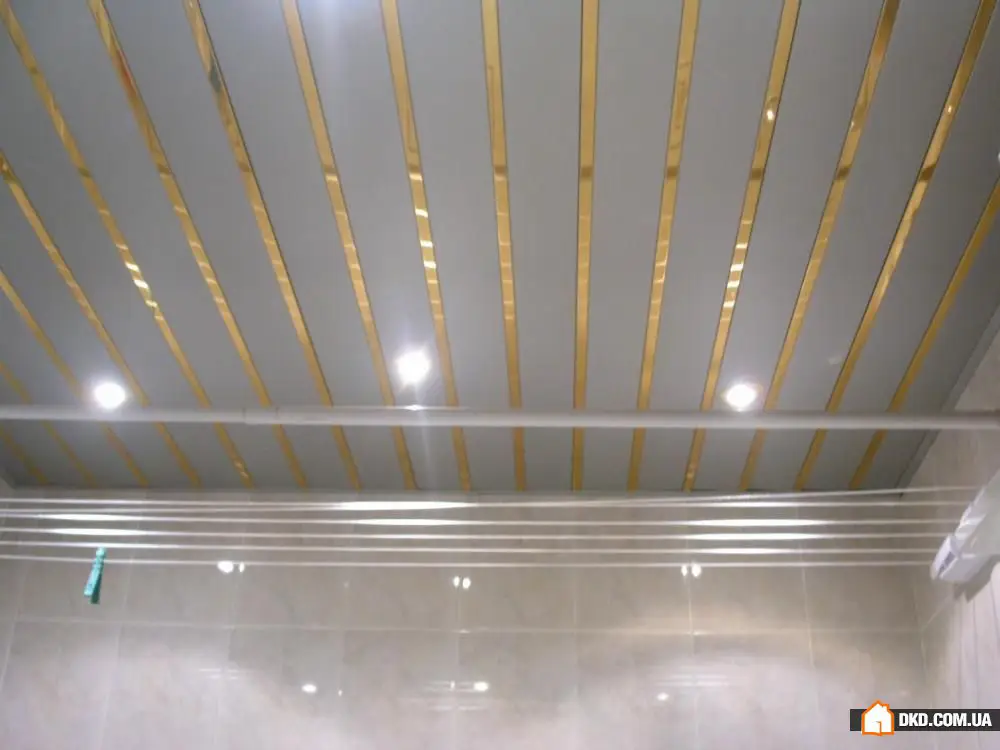
4. Strip Ceiling Systems
A popular design solution in bathroom interiors is installing a strip ceiling. For the frame, long strips (reeds, panels) made of aluminum, steel, or plastic are used as cladding. To prevent the material from becoming damp over time, it is coated with powder paint or polyurethane protective compositions.
Pros: flexible strips allow creating curved structures and changing the room's geometry. The appearance of the structure will be better than that of a painted ceiling or PVC panels - due to a denser structure, you won't see the frame through the facing. Additionally, low weight does not create additional loads on load-bearing walls and partitions.
Cons: high cost; like any suspended ceiling, strip systems significantly reduce room height, so they are not suitable for small apartments.
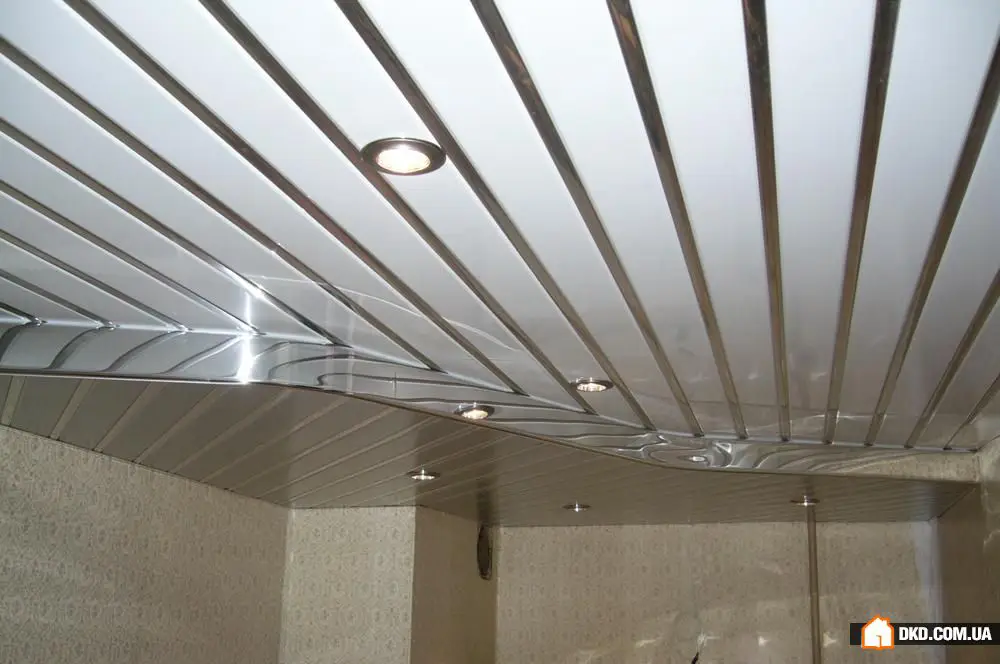
More articles:
 Charming Design: Bathroom
Charming Design: Bathroom 10 Options for Finishing the Kitchen Work Wall Matching Natural or Artificial Stone Countertops
10 Options for Finishing the Kitchen Work Wall Matching Natural or Artificial Stone Countertops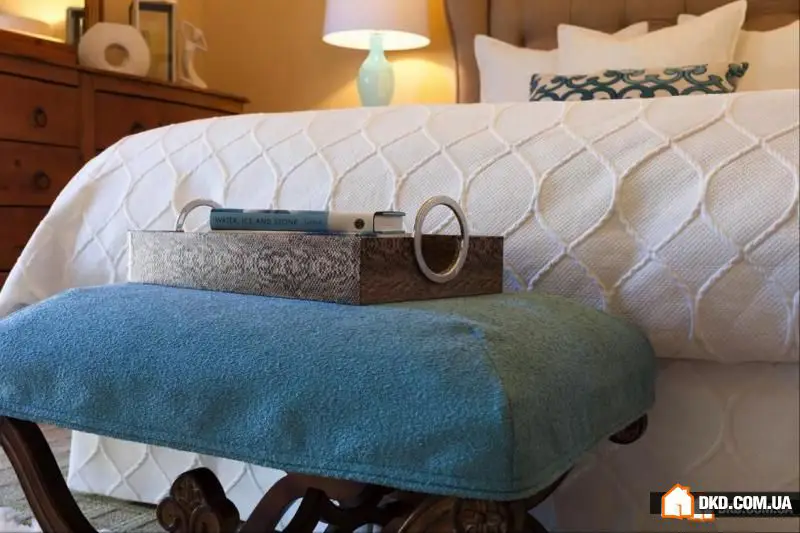 Focus on Fabric: Thin Stitched Material Matelassé
Focus on Fabric: Thin Stitched Material Matelassé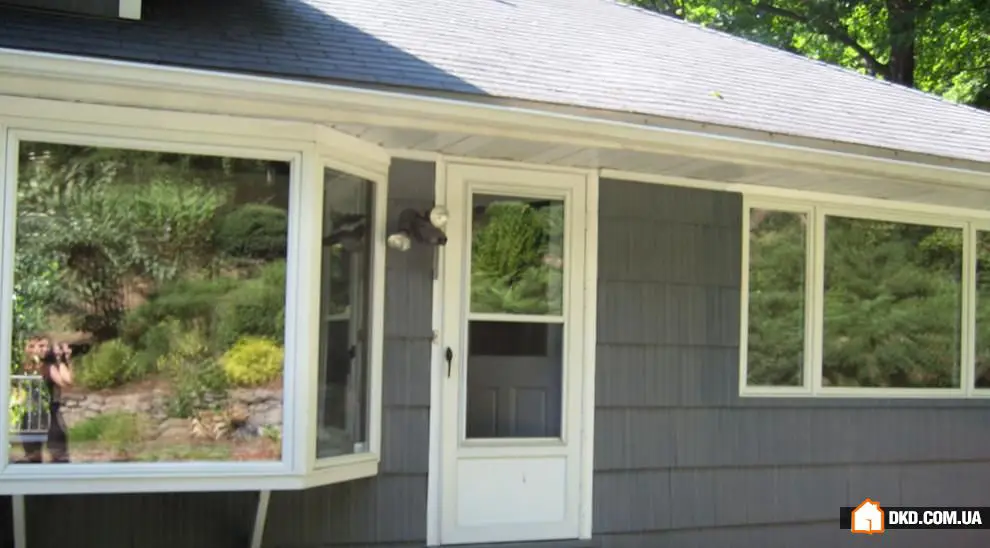 Traveling Together: A 1950 Ranch House Transformed into a Cozy Cottage
Traveling Together: A 1950 Ranch House Transformed into a Cozy Cottage Fantasy Flight Eco Theme: All Sides of Wood in One Interior
Fantasy Flight Eco Theme: All Sides of Wood in One Interior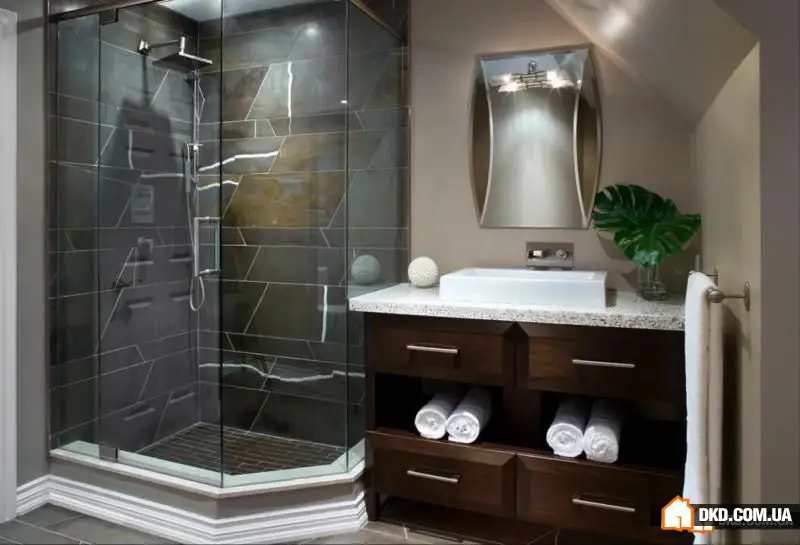 Bathroom Design: 13 Tips for Using Tiles and Other Materials
Bathroom Design: 13 Tips for Using Tiles and Other Materials Urban Oasis in a Modern Loft
Urban Oasis in a Modern Loft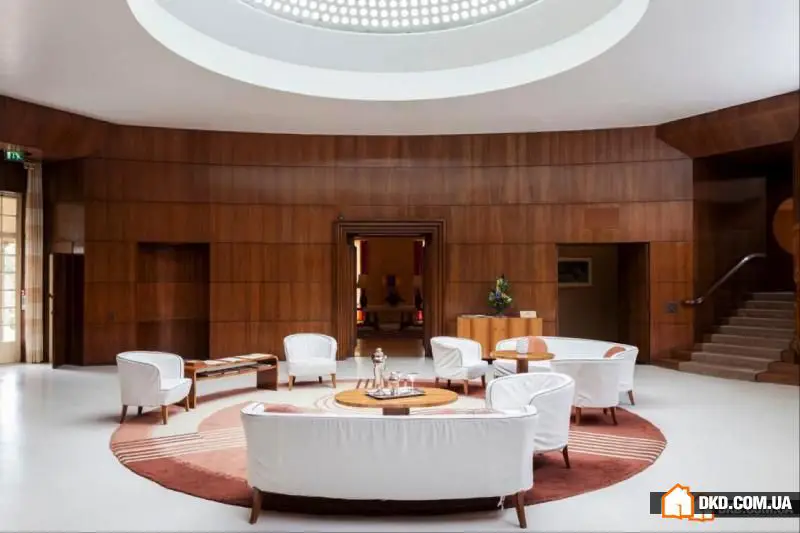 Traveling Together: Medieval Castle with Art Deco Elements
Traveling Together: Medieval Castle with Art Deco Elements